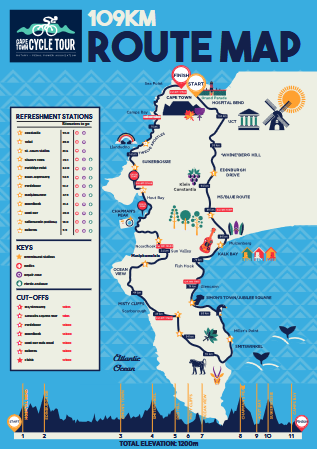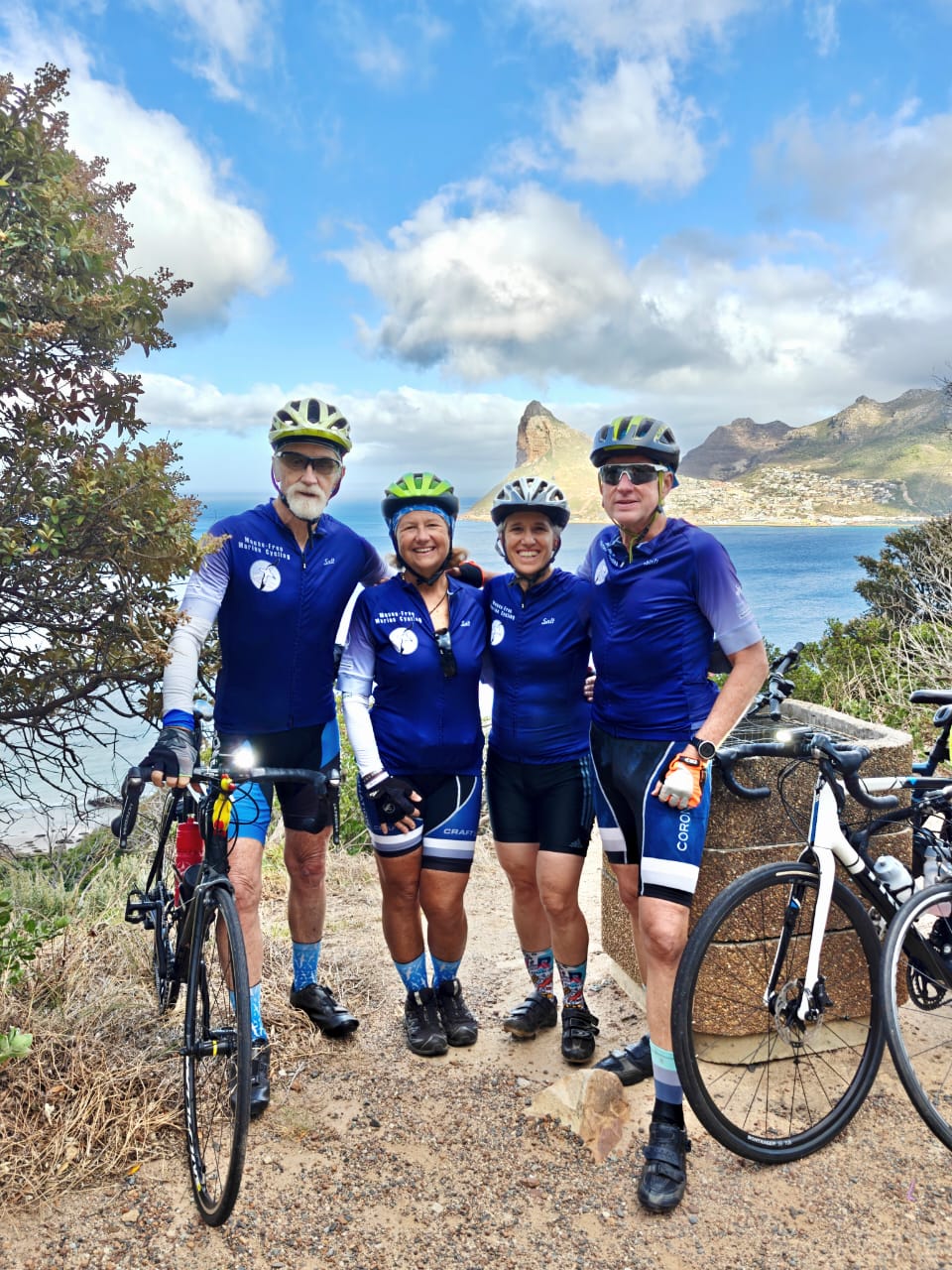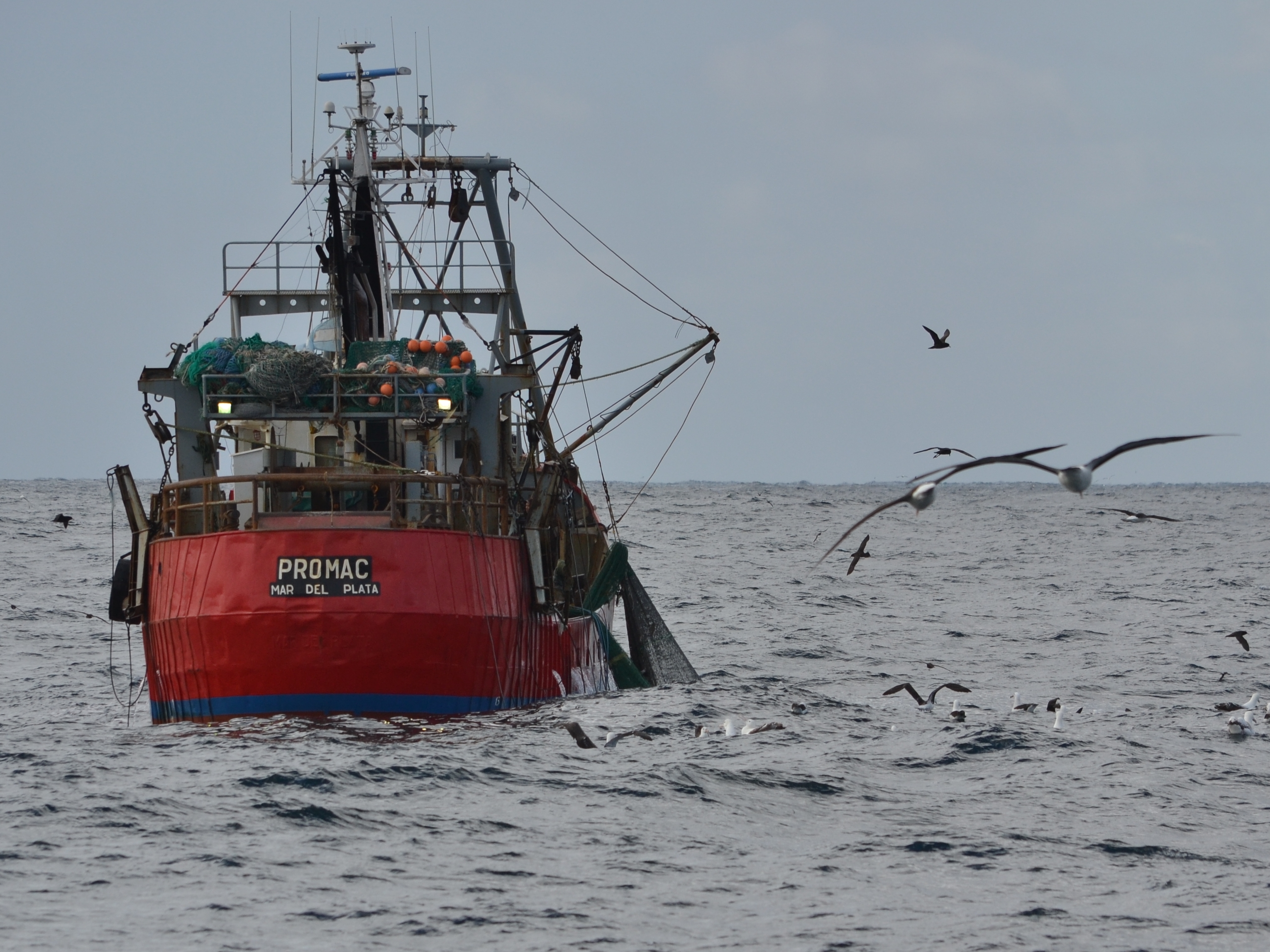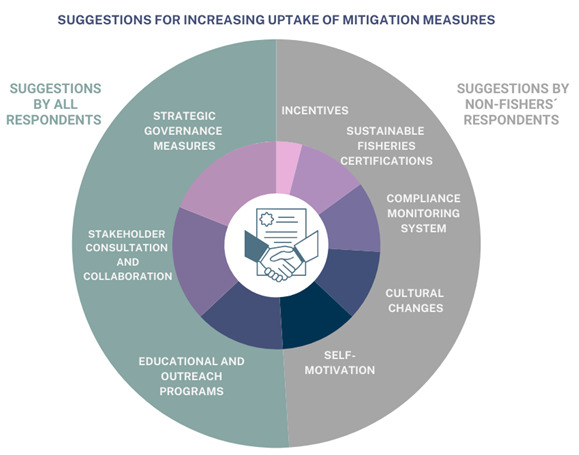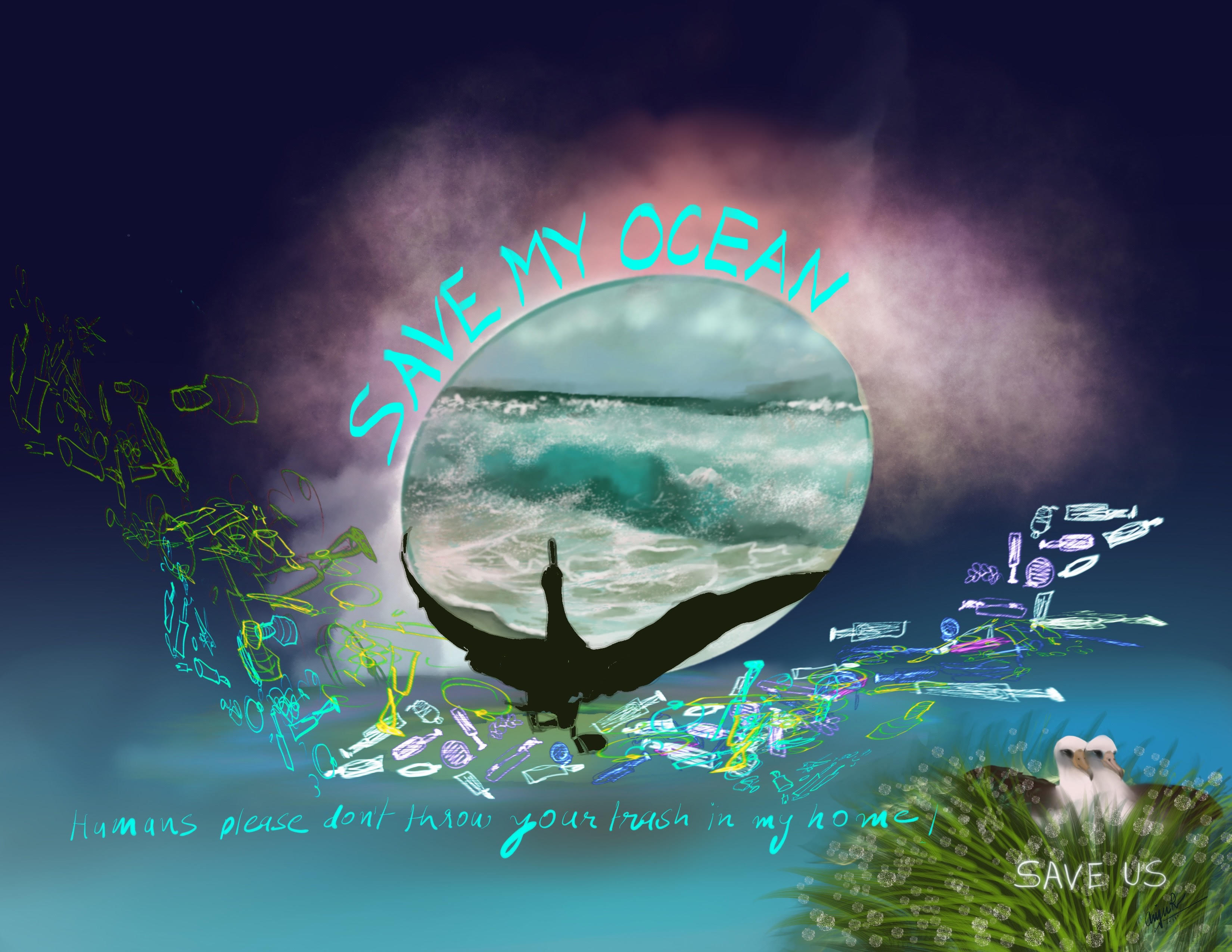
“Save my Ocean” by Anju Rajesh of Artists & Biologists Unte for Nature (ABUN) for World Albatross Day, 2023 with its theme of Plastic Pollution
Alix de Jersey (Tasmanian School of Medicine, University of Tasmania, Hobart, Australia) and colleagues have published open access in the Marine Pollution Bulletin on plastic ingestion by six species of Australian petrels and shearwaters, with occurrence ranging from 0-75%.
The paper’s abstract follows:
“While the problem of plastic ingestion by wildlife is well recognised, it also suffers from a “file drawer” problem where small incidentally collected data remains unpublished because on its own, it may represent only a handful of individuals. There is great strength, however, in combining these disparate datasets to make inferences about broader patterns and therefore inform the discussion about the impacts and extent of plastic ingestion by providing data for sparsely sampled taxa. Here we summarise plastic ingestion records collected from seven seabird species in Western Australia and New South Wales, Australia to provide a baseline and updates on exposure of these species to plastics. For most of the species included in our assessment, this is the first data available regarding plastic ingestion in more than two decades. Very low rates of plastic ingestion were observed in Great-winged Petrels Pterodroma macroptera, Little Shearwaters Puffinus assimilis, and Providence Petrels Pterodroma solandri with only the adult and fledgling Wedge-tailed Shearwater Ardenna pacifica and Sable Shearwater Ardenna carneipes containing moderate amounts of plastic (>8 % prevalence). Black-winged Petrels Pterodroma nigripennis and Masked Boobies Sula dactylatra did not contain any ingested plastic. These data were collected and reported using standardised methods to ensure the information can be used as a benchmark against prior and future plastic ingestion studies. Syntheses such as these provide valuable knowledge for regions or species with limited data, and in doing so, begin to reveal patterns of plastic pollution and its relevance to seabird conservation.”
Reference
de Jersey, A,M., Bond, A.L. & Lavers, J.L. 2025. b Strength in numbers: Combining small pockets of opportunistic sampling for Australian seabird plastic ingestion. Marine Pollution Bulletin 214. 117757.

 English
English  Français
Français  Español
Español 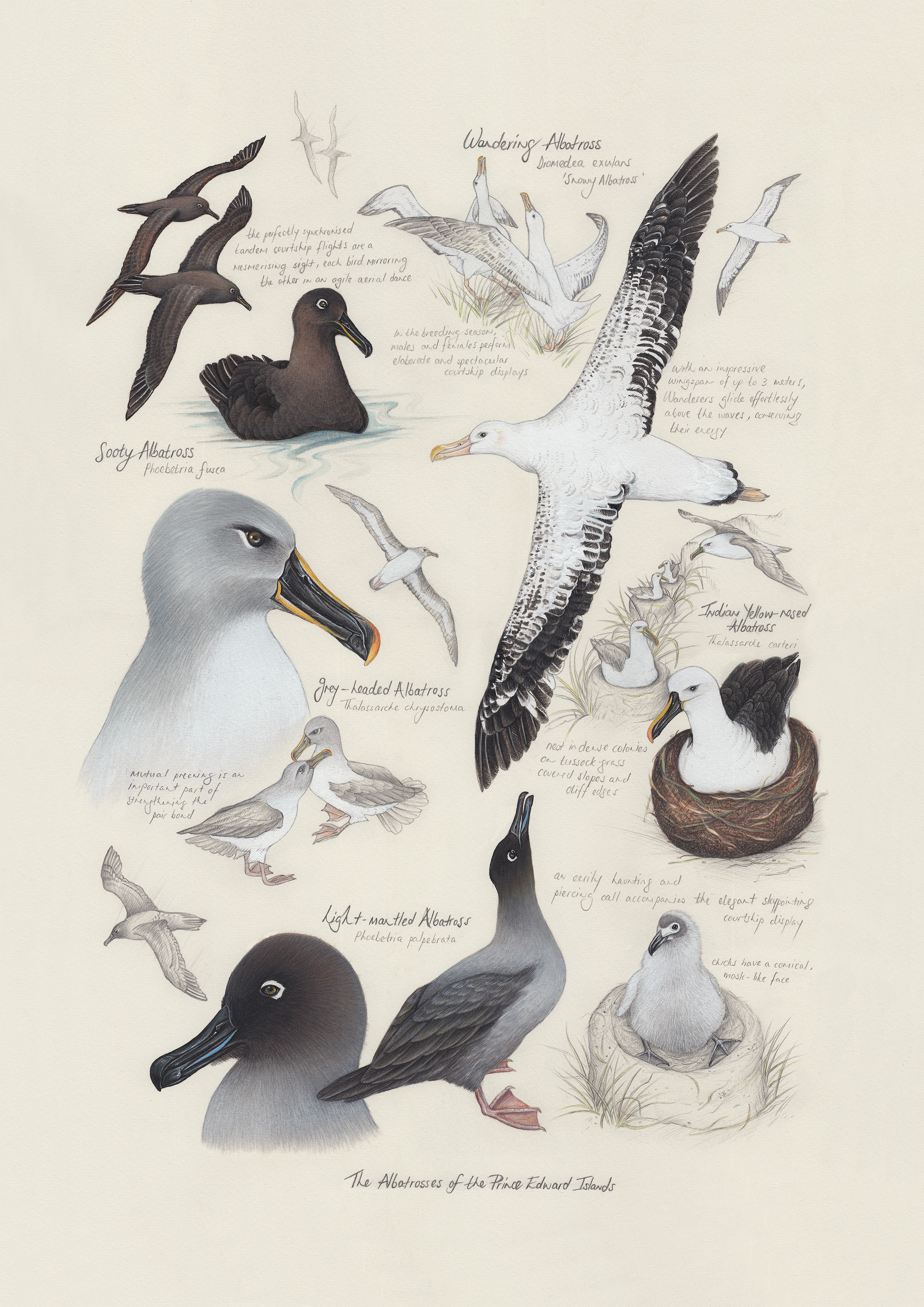

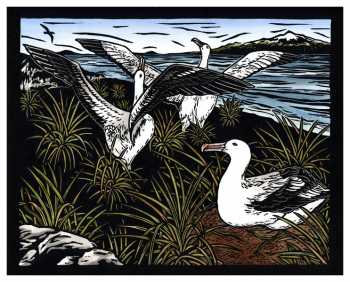
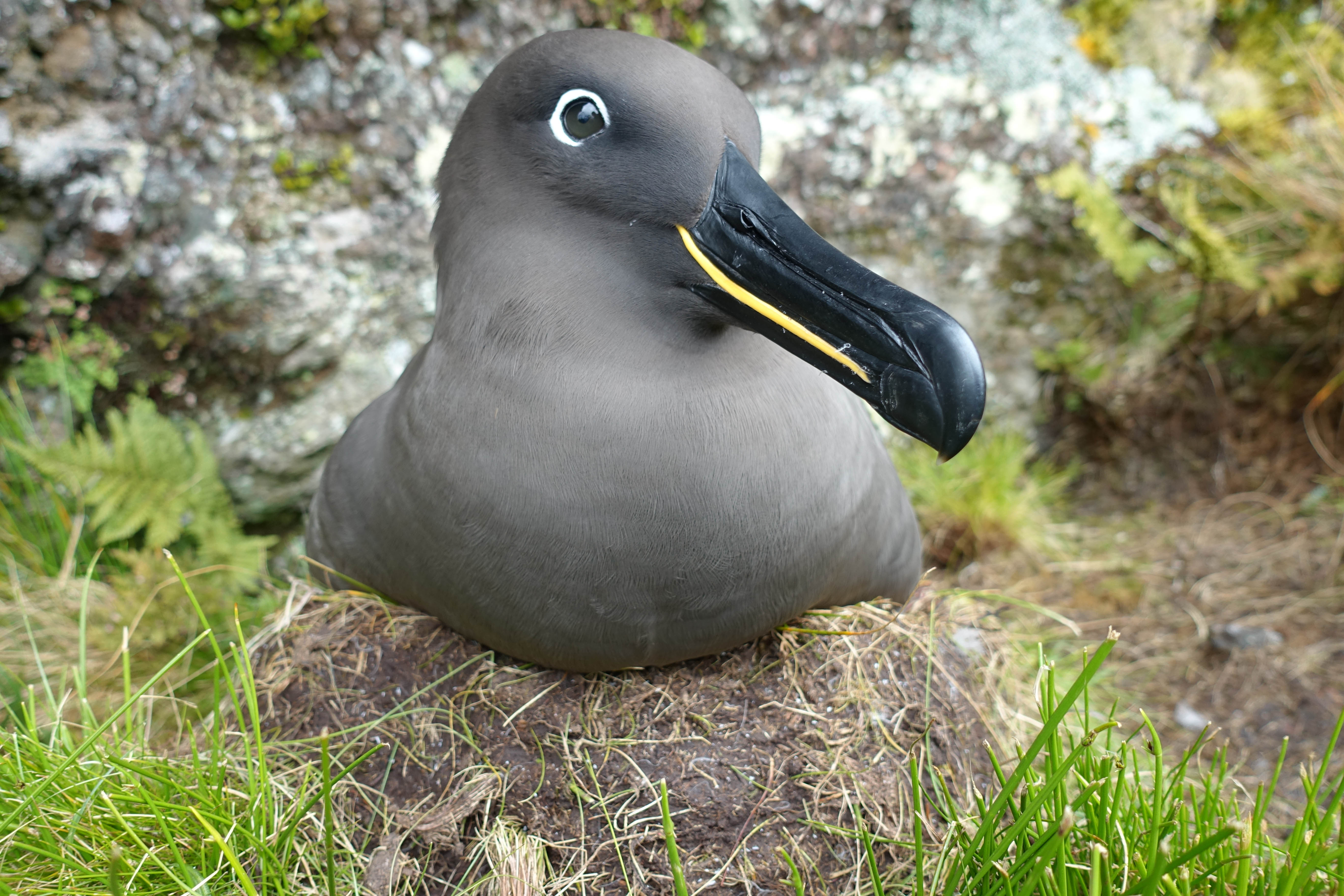

 This wounded Wandering Albatross chick did not survive nocturnal attacks by introduced House Mice on Marion Island, photograph by Michelle Risi, June 2023
This wounded Wandering Albatross chick did not survive nocturnal attacks by introduced House Mice on Marion Island, photograph by Michelle Risi, June 2023